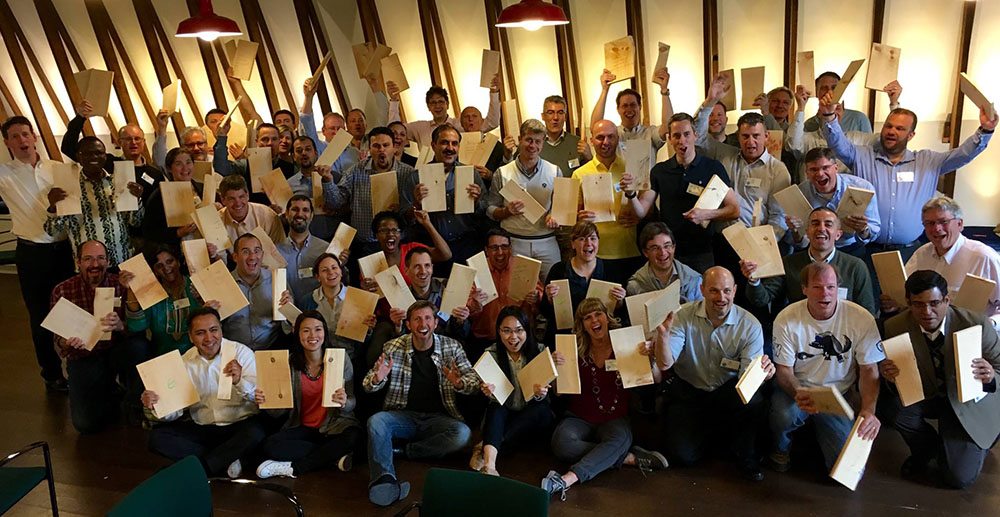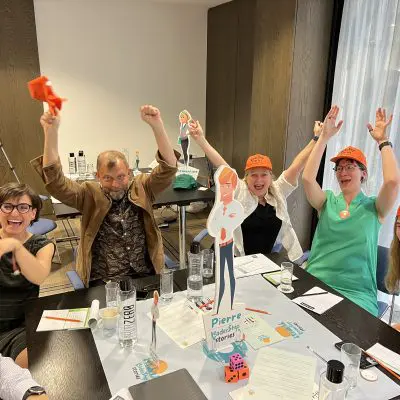Regardless of your industry, the workplace is more age-diverse than ever. With Millenials and Gen-Zers working alongside more seasoned colleagues, this mix of personalities can directly impact your workplace dynamic—often for the better—but only if you tap into its potential.
If not? You could experience alignment, morale, and retention issues–especially for your junior employees.
In a podcast episode with talent development expert Dr. Eric Frazer, Revealing Workplace Dynamics, we sat down to discuss the psychology behind workplace dynamics and how implementing reverse mentoring can positively impact those dynamics.
This article will focus on reverse mentorship, the key benefits your team will reap, and some best practices to follow when you commit to creating a program for your team.
What Is Reverse Mentoring?
Let’s face it–when we call some employees seniors and other juniors, the power structure is clear. In traditional terms, leadership [not to mention power] usually starts from the top down.
Conventional mentoring programs are all about that top-down power mode. A senior-level employee mentors a junior-level employee. And the learning is usually only happening with one party–the mentee.
Here’s where reverse mentoring can disrupt that age-old hierarchy.
Reverse mentoring is where you place a junior-level employee in the mentoring role and the senior-level employee in the mentee’s shoes. But those pairings shouldn’t be random. In the podcast, Dr. Frazer provided us with a clearer picture of what this might look like:
“Reverse mentoring looks like a deliberate match because I’m interested in learning more about this. Through some simple survey questions like that, a manager or a senior manager could pair up a senior mentor.”
Here are just a few scenarios where reverse mentoring would be ideal for your team:
- Your company wants to start running Facebook and Instagram ads, but your senior-level employees rarely use social media. So they don’t know how to create them.
- Your product or service fails to reach Gen Y’s and Gen Z’s, and you need to understand both demographics better.
- Your junior employees are tech-savvy and can handle the new management software. But you’ve noticed lower productivity with your senior-level employees in comparison.

One of the most effective ways to align your employees and create a positive workplace culture is by creating reverse mentoring opportunities. While there are many benefits to implementing a reverse mentoring program, we’ll focus on the top four.
The Top 4 Benefits of Reverse Mentoring Programs
1. Redefines Dated Power Structures
Consider the classic workplace mentorship. A senior-level employee takes an often younger, less experienced junior employee under their wing. This dynamic usually means learning happens in one direction–from the top down.
With a reverse mentoring program, however, you can flip the script. When your junior employee steps up as a mentor instead of a mentee, this redefines the classic power hierarchy. They’re now a leader whose opinions and experiences are valuable and worth sharing with their senior-level colleagues.
2. Promotes a Pro-Learning Workplace
No employee, regardless of rank or seniority, should ever stop learning. Allowing your team to learn from one another–and glean value from their colleague’s experiences is a more organic form of learning and development (L&D).
In this case, instead of hiring an expert for a weekend-long training session, you’ll encourage L&D from within your ranks. This can have a positive impact on their communication and collaboration skills.
A reverse mentoring program will show your team that the company values continuous L&D for everyone–because you can teach every old dog new tricks.
3. Improves Workplace Morale
The thing about power in the workplace is that some folks have a voice that’s heard, and some feel they don’t. When you don’t feel heard, your mindset is anything but positive. Imagine how that mindset could negatively impact an employee’s morale and productivity.
Even worse, when there’s a misalignment between different personality types, that can spell trouble.
Dr. Frazer elaborates in the podcast, “When you have a real misalignment with personalities in the workplace, you have some serious problems. And when there’s a good selection process, in terms of the hiring, then you tend to have alignment towards the organizational goals. It’s never a perfect scenario, but certainly, one that’s more fluid and harmonious.”
So, when we flip the mentoring script and give a junior employee the mentor role, this puts them in a leadership role. They’ll get to show their mentee effective communication skills and expertise which can positively affect their alignment during the reverse mentorship process.
4. Increases Junior Employee Retention
Click on any number of newsreels or social media posts, and you’ll see some version of the following headline: Young People Don’t Want to Work.
First? That’s misleading.
Despite the mass departure of Millennials and Gen-Z’s during “The Great Resignation,” the fact remains– junior employees want to work, but they want to feel like a valued part of the organization.
That’s the difference.
A reverse mentorship can equip them with the value they’re seeking because their unique experiences and expertise are meaningful for C-suite-level employees, too.
How to Successfully Implement a Reverse Mentoring Program
Implementing a reverse mentoring program may seem easy on the surface. But, the truth is, it can take some front-end work. Before you pair up your mentors and mentees, you’ll need to do some prep work.
Here are a few recommendations to consider before creating a reverse mentoring program:
- Determine what need(s) a reverse mentoring program would fulfill for your employees and your company.
- Solicit feedback from your employees via an anonymous survey or even an all-hands-on-deck meeting.
- Consider the personality types of your employees before you pair anyone together.
After considering the above factors, take a look at the following blueprint to establish a reverse mentoring program. Personalize it as you see fit:
1. Carefully Consider the Logistics
You can’t just pair up a junior and a senior-level employee, cross your fingers and hope for the best. Instead, you’ll want to carefully define the nitty gritty for everyone involved. Here’s what we recommend:
- Define the goals of the reverse mentorship program, in general, and then for each mentor/mentee relationship.
- Duration is important. How long will their reverse mentorship last? A few weeks? Three months? Be clear from the outset.
- Keep the bigger picture in mind and communicate it. For instance, how will their reverse mentorship benefit the company?
2. Who Goes With Whom?
Not every mentor/mentee relationship will pan out. That’s why pre-planning on your part is so important. Besides personality types, you’ll want to consider some or all of the following factors:
- The unique expertise, experience, and skill set of your potential mentors.
- The void or lack of experience, skills, and knowledge of your potential mentees.
- Let each mentor and mentee define their objectives and goals. They’ll invest themselves more if they get a say.
Dr. Frazer described the value of diverse personalities in the workplace.
“You’re always going to get a mix of personalities. And I think when you’re looking at teams and creating cohesiveness in teams. This is an area for managers to sort of have their own self-awareness, but also have some observational awareness of who the people are in their team.”
One of the most effective ways to determine how your employees will work together is to allow them to work, collaborate, and bond before the reverse mentorship.
For instance, a team-building exercise that can identify each employee’s strengths and how they might collaborate is Squad Game. Similarly, an exercise like Breaking Barriers would be ideal if you want to give them an activity that will identify any barriers or insecurities that might keep each participant from reaching their potential.
There’s clear value in play when building bonds on your team. Dr. Frazer told us that it promotes cohesion and bonding.
“Being able to play liberates people from their personalities. Because they don’t have to be the right person. They don’t have to have the answer. They’re just really being themselves. That promotes cohesion and connection and bonding in such a quick way that you could not accomplish otherwise. So, I’m a full believer and supporter of play.”
3. Avoid Being Hands-Off
You’ll need to check in regularly with your mentors and mentees. Solicit their honest feedback. Ask them what’s working and what could improve. Also, be sure to reiterate that your door is always open. If they’re stuck or need third-party guidance, they will be more likely to see the reverse mentorship through to the end.
Of course, their feedback will help you redefine your reverse mentoring program over time.
Take the Next Step
No matter how new or experienced, all your employees should commit to learning and leveling up. Implementing a reverse mentorship program will allow them to learn from each other. This signals that learning is a collaborative experience on a level playing field–regardless of their seniority.
So, it’s essential to carefully select your mentor/mentee pairings before the reverse mentorship.
TeamBonding’s team building activities can prepare your mentors and mentees for that collaborative learning process. They’ll learn how to communicate effectively, work together, and carry a clearer understanding of one another’s needs before the mentorship begins.















